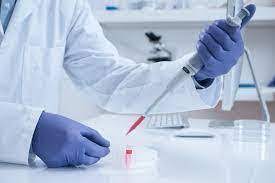Regenerative Medicine is a form of modern medicine that involves replacing human or animal cells. The cells are taken from other body parts and used to create tissues and organs. The purpose of regenerative medicine is to replace missing organs and tissues. Currently, there are several ways regenerative medicine is being used.
One example is the use of gene transfection to enhance the properties of cells. Gene transfection can be done in tightly regulated processes. However, the business model for these procedures is challenging. For instance, the cells may only be needed once for the benefits to last. In such cases, the process may be more like selling a medical device. In the future, regenerative medicine may complement traditional transplantology. You can get additional information at Regenerative Medicine Near Me
 In order to perform regenerative medicine, stem cells are isolated from the patient’s own blood, fat, or bone marrow. These cells are then placed into a centrifuge machine. These stem cells are then injected into the damaged body part. In a spinal disc, for example, these cells can develop into healthy cells. Eventually, the stem cells repair the disc. This method can be used to restore lost motor functions or brain functions.
In order to perform regenerative medicine, stem cells are isolated from the patient’s own blood, fat, or bone marrow. These cells are then placed into a centrifuge machine. These stem cells are then injected into the damaged body part. In a spinal disc, for example, these cells can develop into healthy cells. Eventually, the stem cells repair the disc. This method can be used to restore lost motor functions or brain functions.
The field of regenerative medicine is evolving quickly and is still at the early stages. It has been rooted in the field of surgery and the application of surgical implants, as well as the development of more sophisticated biomaterial scaffolds. The aim of most regeneration therapies is to improve function or repair damaged tissue. In addition to treating damaged organs, these technologies can also be used to treat congenital abnormalities such as thalassaemia or a hole in the heart.
Regenerative medicine has the potential to improve many conditions and provide a better quality of life. Scientists in this field study cellular processes and tissue regeneration in order to create novel therapies. This field may eventually merge with other fields of medicine to treat disease and improve health. So far, there is promising evidence that regenerative medicine has great potential to improve our lives.
Regenerative medicine can also improve the healing of damaged musculoskeletal tissues. In some cases, it has been proven that stem cells and platelet-rich plasma treatments can help speed the recovery process from orthopedic procedures. In addition, it may prevent the need for surgery in some cases. This allows patients to return to their normal routines faster.
While regenerative medicine is still a new field, it has proven effective for many patients with musculoskeletal ailments. However, research is limited and there is no consensus on the best method for each patient. Therefore, patients should consult with their physician about the procedure and discuss the best treatment option for their particular case. Patients may experience some temporary discomfort during the procedure, which will usually disappear after a short period of time.
There are several regenerative medicine products currently in the market. Some have received FDA approval. Many of these products may be helpful for certain types of injuries, but some are not effective enough to resolve the injuries completely. Furthermore, the cost of developing and bringing these new products to the market is prohibitive.
